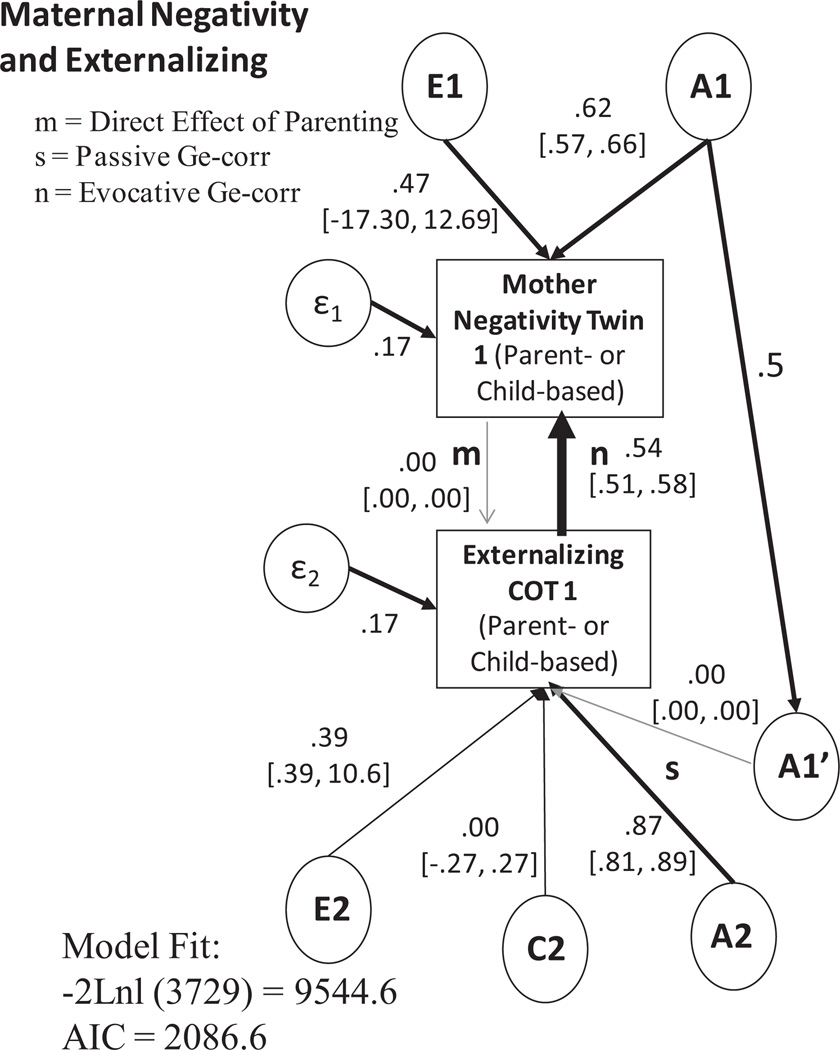Figure 2.
Results for maternal negativity Extended Children of Twins (ECOT) model. This figure is reduced from Figure 1 in order to more succinctly present results. Unstandardized path estimates and 95% confidence intervals [in brackets] are provided for each estimated path. Significant paths are emboldened. Model fit statistics are provided in the lower left. A1 represents latent genetic influences of parents on their parenting, E1 represents latent nonshared environmental influences of parents on their parenting. A2 represents latent genetic influences of adolescents on their externalizing problems; C2 represents latent shared environmental influences of adolescents on their externalizing problems; E2 represents latent nonshared environmental influences of adolescents on their externalizing problems. A1′ represents the effect of genes shared by parents and adolescents on adolescents’ externalizing problems. Path m represents direct environmental effects of parenting on adolescents’ externalizing problems while path n represents child evocative effects of adolescents’ externalizing problems on parenting. Path s represents the influence of shared genes of parents and adolescents; significant path s and path m signify passive gene -environment correlation (rGE) while significant path n and either A2 or s signifies evocative rGE. ε1 and ε2 are the measurement error, and constrained to be equal.

